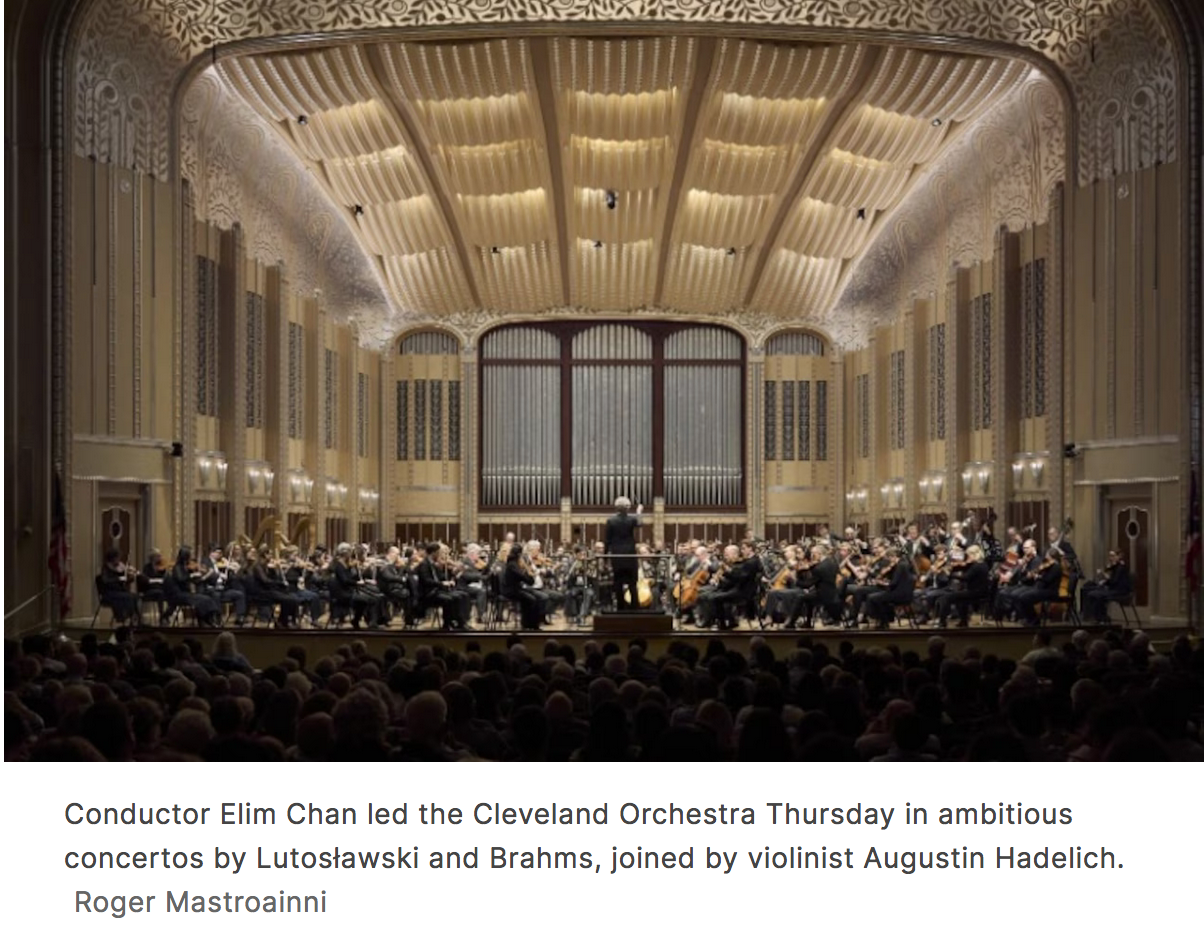by Stephanie Manning

CLEVELAND, Ohio — “Witold Lutosławski Week” has come early this year, and what a treat it is.
When the Polish composer visited Cleveland in 1988, Mayor George Voinovich designated February 29 through March 6 “Witold Lutosławski Week” in his honor. And this week, The Cleveland Orchestra is revisiting his music at Severance Music Center. On Thursday, January 16, conductor Elim Chan led the ensemble in ambitious concertos by Lutosławski and Brahms, joined by violinist Augustin Hadelich.
The Orchestra has been performing Lutosławski’s music long before and after the composer-conductor’s 1988 visit, beginning with the U.S. premiere of his Concerto for Orchestra in 1958. This week’s audiences will hear that piece — a contemporary landscape painted with broad strokes of color, yet still requiring plenty of precision.
The Concerto is an experience of extremes — you find yourself leaning forward to hear quiet plucks from the double basses one moment, and being blown back into your seat by a glorious wall of brass and cymbals the next. Chan’s exacting, batonless conducting served the work well. The Orchestra easily shifted between these dueling modes, digging ferociously into the big group moments before backing off to let individual musicians speak.
The listeners’ eyes and ears are likely to be ricocheting around, trying to catch every interesting moment from piccolo to celesta, English horn, xylophone, and on down the list. The trumpet section led a majestic brass chorale as the piece built to its thrilling ending.
In her second dynamic appearance on the podium this season, Chan seems well on track to becoming an audience favorite. Already on that list is Augustin Hadelich, who was called upon on short notice this week due to Hilary Hahn’s withdrawal. Hadelich left his distinct stamp on Brahms’ Violin Concerto, swapping the usual Joseph Joachim cadenza for his own, a dazzling tour through the first movement’s principal themes.
Swaying to the music during the orchestral introduction, Hadelich approached the piece with that same sense of flow. His speed and dynamics rose and fell like waves, particularly in the second movement, while his feather-light high register practically floated on the wind.
Hadelich rightfully refrained from overpowering his fellow musicians, whose parts are especially crucial to the performance’s success. Principal oboe Frank Rosenwein led the way with elegance and grace during the woodwind chorale that begins the second movement. Here, Chan could have relaxed her tight control a bit to allow each phrase more room to breathe.
Still, her approach also ensured that the third movement fit together like a jigsaw puzzle, orchestra and violin filling up every moment with music.
Hadelich then sent chuckles and murmurs of recognition through the crowd with his encore, his wonderfully showy arrangement of the classic fiddle tune Orange Blossom Special. Being a fiddler himself, this invigorating contrast to the Brahms was not entirely unexpected. The violinist’s playfulness and commitment to the familiar tune only doubled his warm reception from the crowd.
Photo by Roger Mastroianni
Published on ClevelandClassical.com January 23, 2025
Click here for a printable copy of this article



